After the earthquake, documentary photographer Max Hodges felt that it was important to document the event to raise awareness of the devastation and needs of thousands of displaced people. He headed up to some hard-hit areas, hitchhiking from city-to-city. These photos were taken on his trip there and capture some of the immense loss and devastation the earthquake caused.
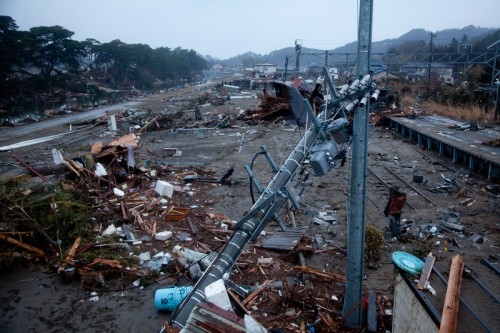
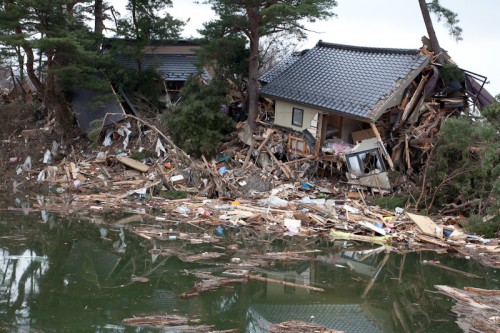
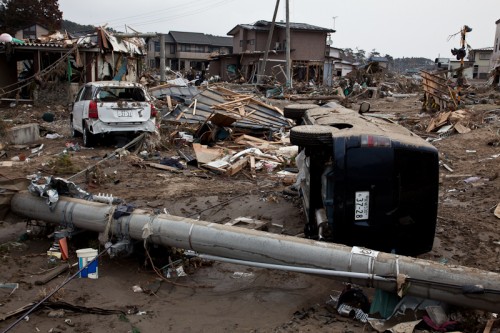
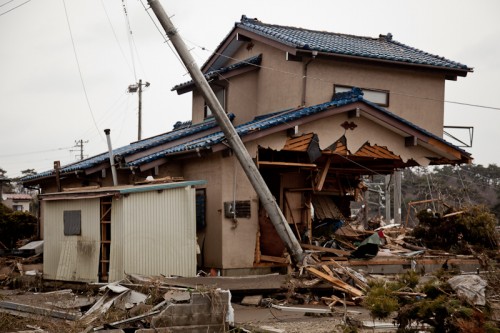
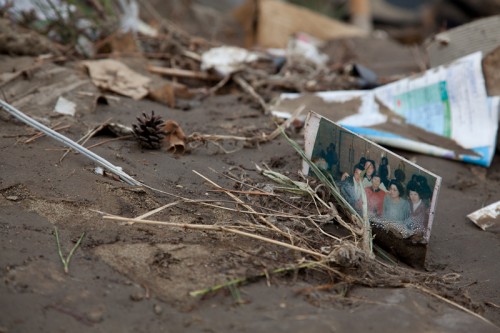
What risks were you aware of, and which scared you most? Was it the aftershocks and further tsunamis, or the threat of radiation exposure/poisoning?
Max Hodges: I wasn’t really excited about passing through Fukushima but wasn’t really worried about anything else. I’m not very risk-adverse by nature. I spent a year-and-a-half documenting Kabukicho [Japan’s biggest red-light district] and managed to get my ass kicked on the street by a few guys.
What did you think about the media coverage you had seen before you left to go up?
I spent a lot of time researching the Fukushima Daichi reactor issue, and saw the video of the explosion, but really didn’t look at much coverage of the tsunami and earthquake devastation before going up. I actually didn’t even know where I was heading, and once I got to Sendai I just asked a woman on the street where to go and she told me Nobiru.
What surprised you most about what you saw and found compared to your expectations?
I didn’t have a lot of expectations really, but the scale of the disaster is really enormous. It’s one thing to see a picture on a web page shot from a helicopter and quite another experience altogether to walked around and see all the devastation with your own eyes. I felt like I was doing a forensic investigation. You can start to reconstruct the scene of the crime so to speak by moving around and examining things.
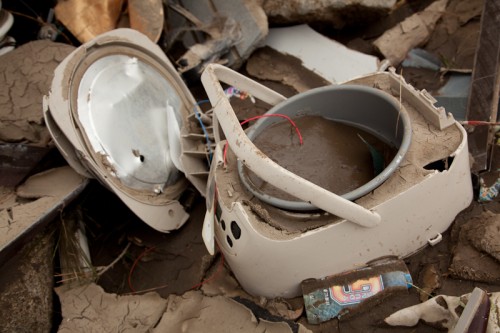
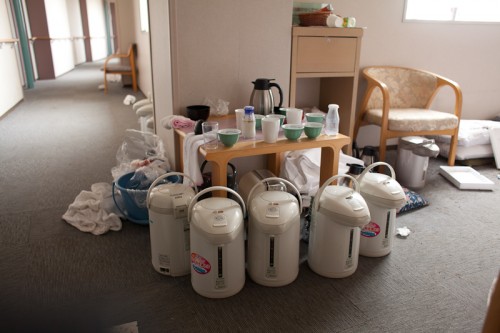
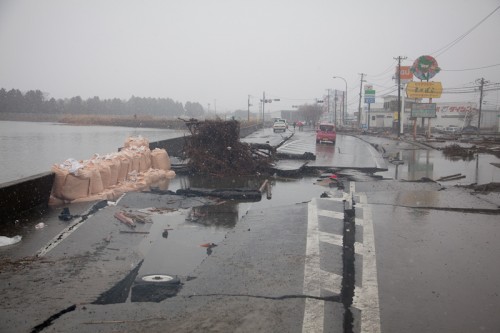
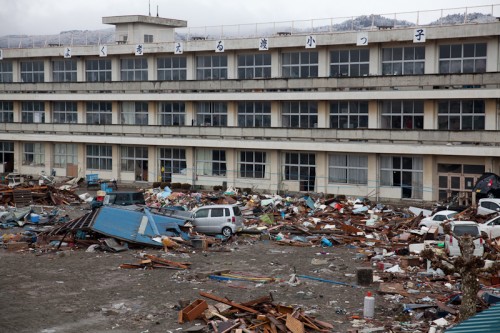
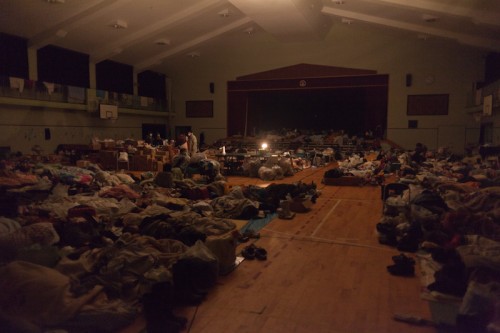
The press has been praising the strong moral instincts displayed by the Japanese victims. In one of your photos, you say that a man and his friend were using a pickaxe to break into an ATM. Did you consider not posting this photograph, for the negative impact it might have? Or did you consider that it might change the prevailing view that the tsunami survivors are honest and refuse to loot?
I can say that the vast majority of everyone I saw seemed like decent people, hard at work trying to put their lives back together. The volunteers I met were also very noble in taking responsibility to care for others. But I’m sure for some the urge to loot is hard to resist, it’s just that most of those people are probably smarter than to try and attempt a heist during broad daytime. In hindsight I’m upset with myself for not staking them out better, so I could have captured their criminal act in progress, which would have been a more compelling shot. Instead I just yelled, “dame dayo!” [“Stop that!”] I started walking towards them while shooting photos in order to scare them away.
What made you decide to take a series of ‘little things’? What is it about the details that interested you?
All the small artifacts are everyday objects found in Japanese homes. Some are practical, some superficial, some sacred. Together they compose, to a certain extent, a portrait of the victims – their memories and their pre-occupations – and the context of these photos shows just how swiftly and unexpectedly those lives were uprooted.
Were most people you met friendly, or were they unwelcoming of an American photographer?
Most everyone I met was helpful. I hitchhiked rides from seven or eight drivers in total, and everyone openly shared information with me. While I was there I didn’t see any Japanese or international journalists or aid workers, or any foreigners at all. So a lot of people were surprised to see me and wondered where I came from.
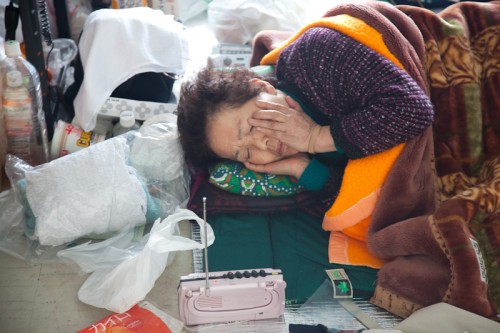
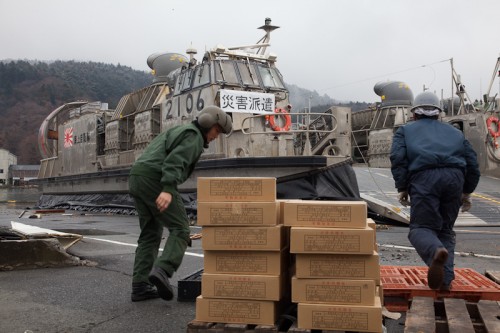

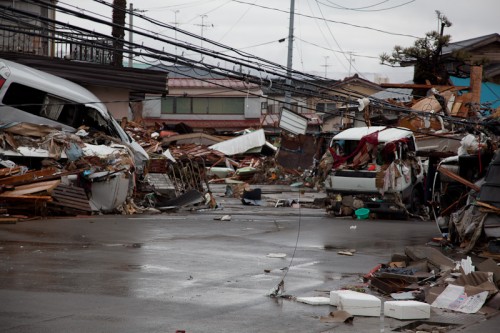
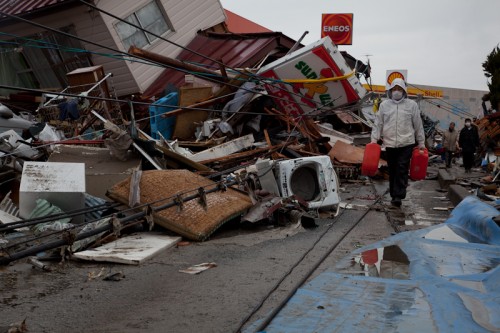
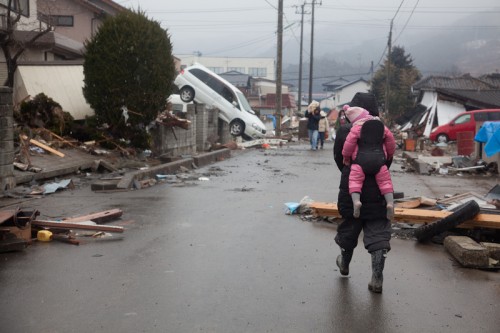
What do the people need, and where in particular? If you were to go again, what would you bring to give to them?
When I was there people needed water, food, shelter, electricity, gasoline, medicine and medical care. Pretty much all the basics you can imagine. Some people I met were driving from shelter-to-shelter looking for loved ones, but it’s difficult to do because you can’t buy gas anywhere and the phones don’t work. People siphon gas out of damaged vehicles. Also, some people are in large shelters, but many other people prefer to be in smaller shelters, so people are very spread out which makes it hard to reach everyone with supplies. But I’ve been back in Tokyo a week already, so I don’t know how things may have improved. Second Harvest of Japan maintains a list of needed items.
Are you planning to go again?
I may go back, but right now I don’t have a set plan.
What do you advise people to do to help?
Donating money to the aid organizations is always welcome. Charity Navigator is a good resource for researching which organizations are most effective. They also have some tips on what not to do.
Your own list of aid organizations is also good.
For anyone who is thinking to go up there on their own like I did, please bring all the resources you’d need, like food, warm clothes, and camping gear. I don’t know if the gasoline situation has improved, but when I rode up with my friend, Jensen Walker, he filled up the tank and loaded the car with about 30 gallons of gas in portable containers. We had different agendas, so once we got there I hopped-out and started hitchhiking from city-to-city, but I brought my own food with me. It’s inappropriate for a journalist to go up there expecting to consume resources in a shelter dedicated to the victims.
It’s pretty rough living up there. I spent a lot of time walking in the rain and snow, while carrying a lot of heavy gear. I slept in an abandoned building and had to dig a bottle of sports drink out of the mud when I ran out of water. But if you have a car to travel and sleep in, I guess it should be a lot easier. You should remember you’re there to cover the tragedy, not to add to it, and behave accordingly. And definitely bring things for the people there if you can.
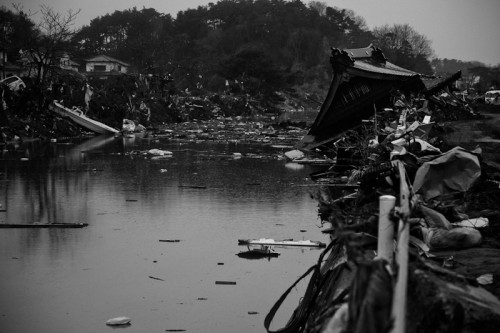
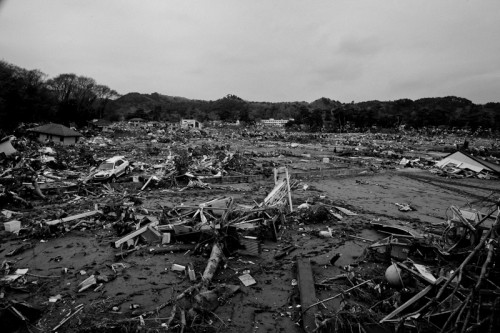
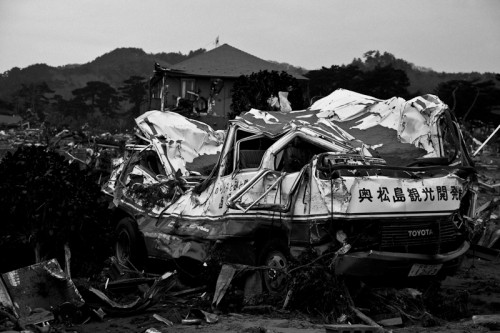
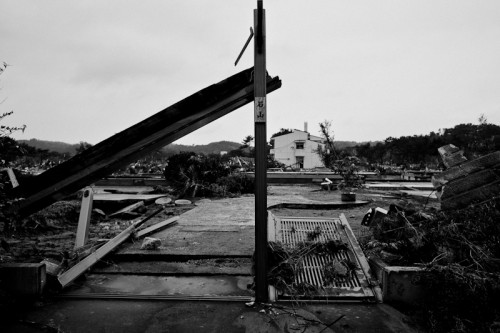
Max Hodges works as a photographer and creative director. He has also produced Tokyo Realtime, a series of audio guided tours for Tokyo neighborhoods.
More photos from this series can be seen at maxhodges.com
Amzing, scary and sad photos.
Thank you for sharing. Far too often reality gets lost in the wake of sensationalism.
[…] of Nobiru in Higashimatsushima. The town was severely hit by the tsunami as can be seen from these eye witness accounts right after the disaster. The plan for the district is to move the entire community inland up on […]